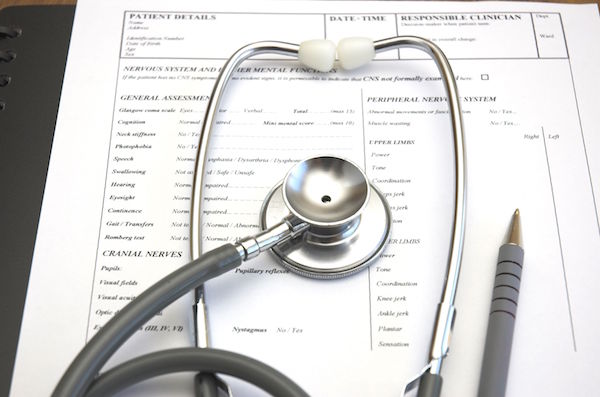
WEDNESDAY, Nov. 9 (HealthDay News) — An EEG, which measures brain activity, appears to be able to detect awareness in some patients thought to be in a permanent vegetative state, a new Canadian study finds.
Functional MRI (fMRI) is also able to show whether an unconscious patient has any awareness, but the high cost and limited availability of these devices make the test prohibitive for most patients, the researchers noted.
“We have been able to show that 20 percent of a group of 16 patients who, to the external world, appear to be unconscious are actually entirely conscious,” said lead researcher Damian Cruse, a postdoctoral fellow at the Centre for Brain and Mind at the University of Western Ontario.
“When you think about the number of patients throughout the world who are considered to be in a vegetative state, 20 percent adds up to a large number of individuals who understand everything that is going on around them but are unable to show this,” he said.
An EEG, also known as an electroencephalograph machine, can be brought to a patient’s bedside and could potentially provide every patient with the opportunity to communicate with the outside world, Cruse added.
The report was published in the Nov. 10 online edition of The Lancet.
In this small study, 16 patients who had either traumatic brain injury or non-traumatic brain injury, and who had been diagnosed as being in a vegetative state, were tested with an EEG.
While undergoing the test, the researchers asked the patients to imagine movements of their right hand and toes.
In addition to the 16 patients in a vegetative state, the researchers also tested 12 healthy people.
Cruse’s team found that three of the patients had appropriate responses on the EEG even though they appeared physically unresponsive. Two of these patients had suffered a traumatic brain injury and the other had a non-traumatic brain injury.
There was no significant relationship between patients’ clinical histories and their ability to follow commands, the researchers noted.
This finding could have profound implications for the patient, their families and their health care teams, Cruse said. “An exciting future possibility, which is our next primary aim, is to develop this technique into a communication tool,” he explained.
“Since we now are able to demonstrate that potentially 20 percent of patients considered to be in a vegetative state are actually able to understand what we ask them, our next aim is to provide them with the ability to respond. Clearly, an ability to interact with their external world will greatly change the lives of any patients who are able to make use of this technique.”
The next step is to be able to ask patients questions like: “To answer yes, imagine moving your right-hand, to answer no, imagine moving your toes,” and one could tell their answer from their brain activity, Cruse explained.
There are a number of technological hurdles to overcome in interpreting patient responses, but these are not insurmountable, he said.
Dr. Jonathan A. Friedman, director of The Texas Brain and Spine Institute at Texas A&M Health Science Center College of Medicine in Bryan, said that “the study is novel and potentially important.”
“This study adds to a growing body of knowledge suggesting that the vegetative state is more complicated and diverse than previously thought,” Friedman said.
Dr. Jaime Levine, medical director of brain injury rehabilitation at NYU Langone Medical Center in New York City, said that “there is nothing worse than a patient who is conscious, but has been diagnosed as vegetative. So, a test that was portable could prove useful.”
Such a test could identify patients who have “rehabilitation potential.” In addition, it could help families make decisions about treatment and end-of-life care, Levine said.
However, Morten Overgaard, head of the Cognitive Neuroscience Research Unit at Aarhus University in Denmark and author of an accompanying journal editorial, said there are two important problems with the study.
“First of all, almost all cognitive functions are found to work both consciously and unconsciously in healthy people. So, if people follow a command it’s not an absolute clear indication that they are conscious of the instruction.”
So, if an EEG were going to be a test to determine which patients will be treated and which patients won’t be treated, the test is not strong enough to make that determination, Overgaard noted.
The second point has to do with how people are classified as being in a vegetative state. The current criteria have nothing to do with subjective experience patients might have. So these tests are too blunt to really identify which patients will benefit from treatment, he said.
“If you want to talk about whether these people are conscious, we need a new and different scale,” Overgaard said. “This finding should not be used to just say some patients were misdiagnosed, but rather to challenge the categories we use now to talk about consciousness.”
More information
For more on coma, visit the U.S. National Library of Medicine.

